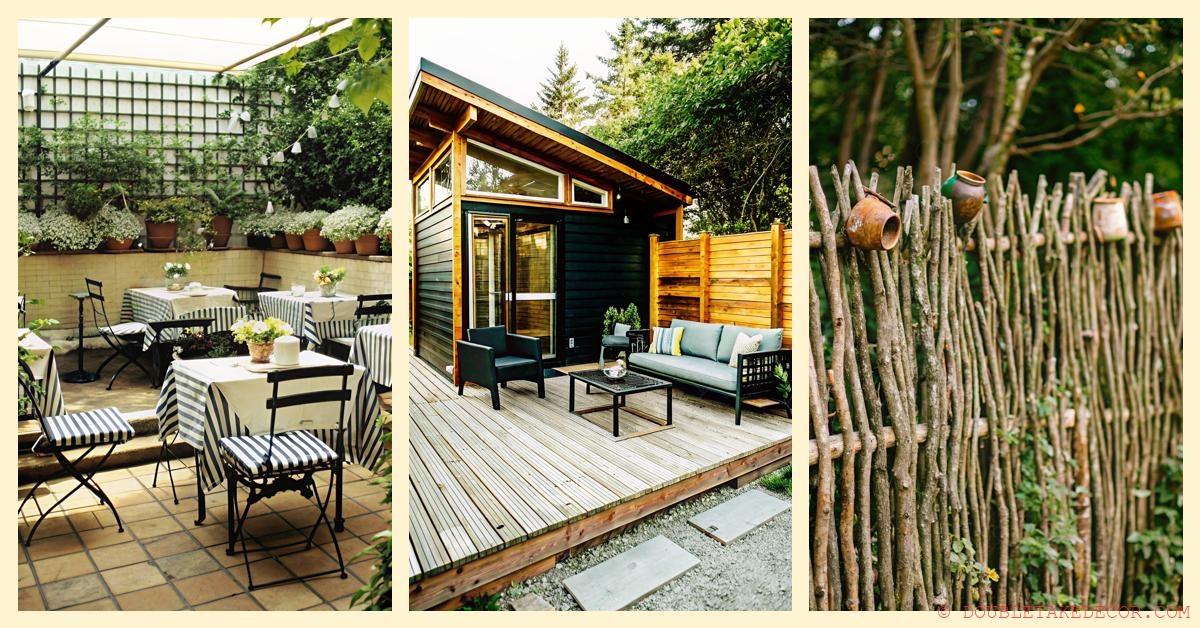
Stepping stones are more than just practical pathways through your garden—they’re versatile design elements that transform outdoor spaces with both function and beauty. These flat pieces, available in materials ranging from natural stone and concrete to brick and wood, create stable walking surfaces while allowing vegetation to flourish between them.
Beyond their practical purpose of guiding foot traffic and preventing soil erosion, stepping stones offer endless creative possibilities. They come in various shapes, colors, and textures that can be customized to complement any landscape design or personal style preference. Whether you choose pre-made options or craft your own using molds and decorative elements, these pathways add character and definition to your outdoor areas.
When properly installed with careful planning and regular maintenance, stepping stones create inviting routes that enhance curb appeal while protecting your garden. They effectively separate functional zones, highlight special features, and provide solid footing during wet weather. The versatility of stepping stones makes them an excellent alternative to traditional pavers, offering the flexibility to create unique patterns that seamlessly integrate with the natural environment.
- 🌿 Versatile Garden Enhancers: Stepping stones are not only practical for creating stable walking paths in gardens, but they also enhance the beauty and design of outdoor spaces by blending functionality with aesthetic appeal.
- 🎨 Creative Customization: Available in a variety of materials, shapes, and colors, stepping stones can be customized to suit any landscape style, offering endless possibilities for personalizing garden pathways to match individual preferences.
- 🛠️ Easy DIY Projects: Crafting your own stepping stones using molds is a simple DIY project that allows for personalization with decorative elements, adding unique charm and functionality to outdoor areas.
- 🌳 Functional Landscape Elements: Stepping stones effectively define outdoor spaces, guide foot traffic, prevent soil erosion, and enhance curb appeal, making them a versatile and attractive addition to garden landscapes.
Concrete Slab Garden Pathway
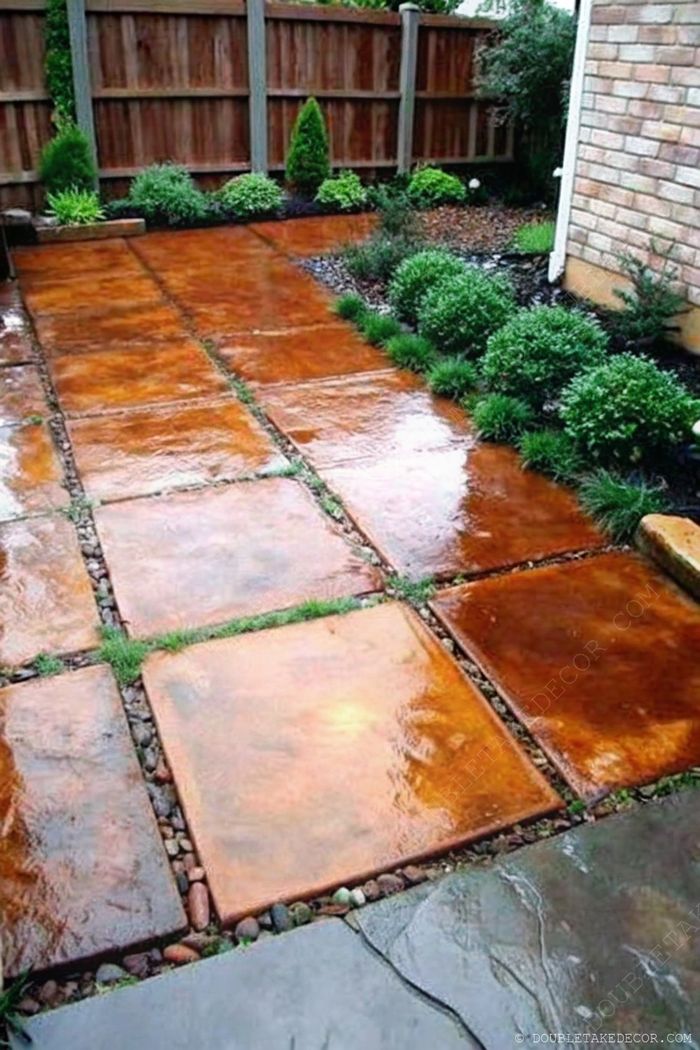
Install large rectangular concrete slabs to create an elegant garden pathway. Surround each slab with small pebbles and allow grass to grow between gaps for a natural look. This design combines durability with aesthetic appeal while providing a clear walking route. Enhance the borders with trimmed bushes and evergreens for a polished, organized garden layout.
Winding Brick Garden Pathway
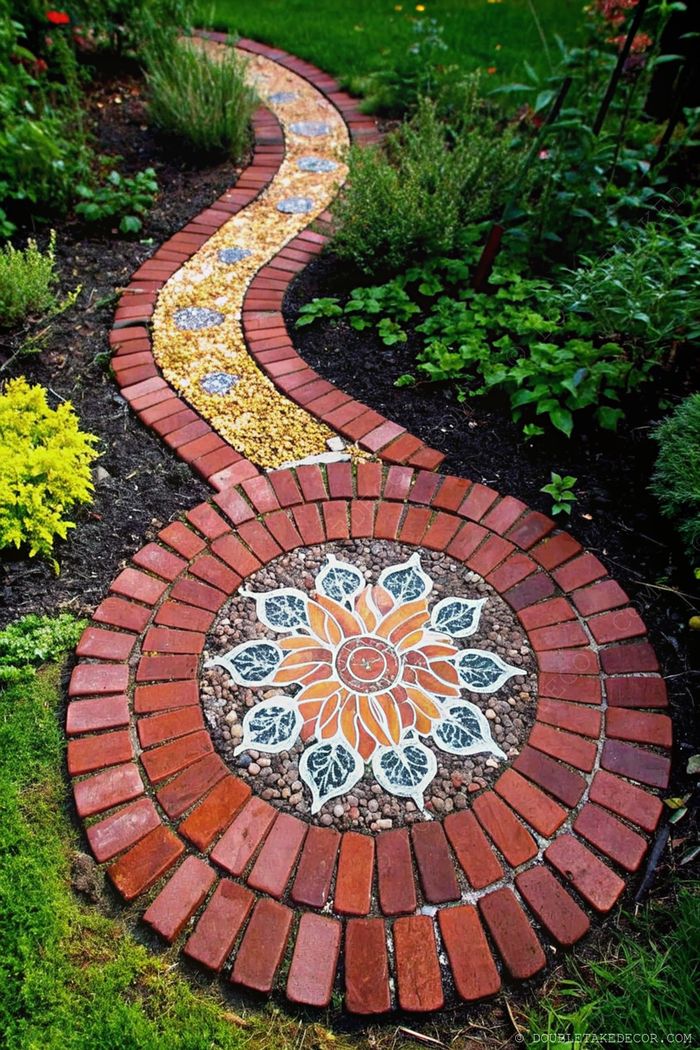
Create a captivating garden pathway using red bricks arranged in a winding pattern. Incorporate a decorative circular flower motif as a focal point to add artistic flair. Line the edges with decorative stones for definition and contrast against surrounding greenery. This functional design element not only guides movement through your garden but elevates its visual appeal.
Mixed Material Garden Pathway
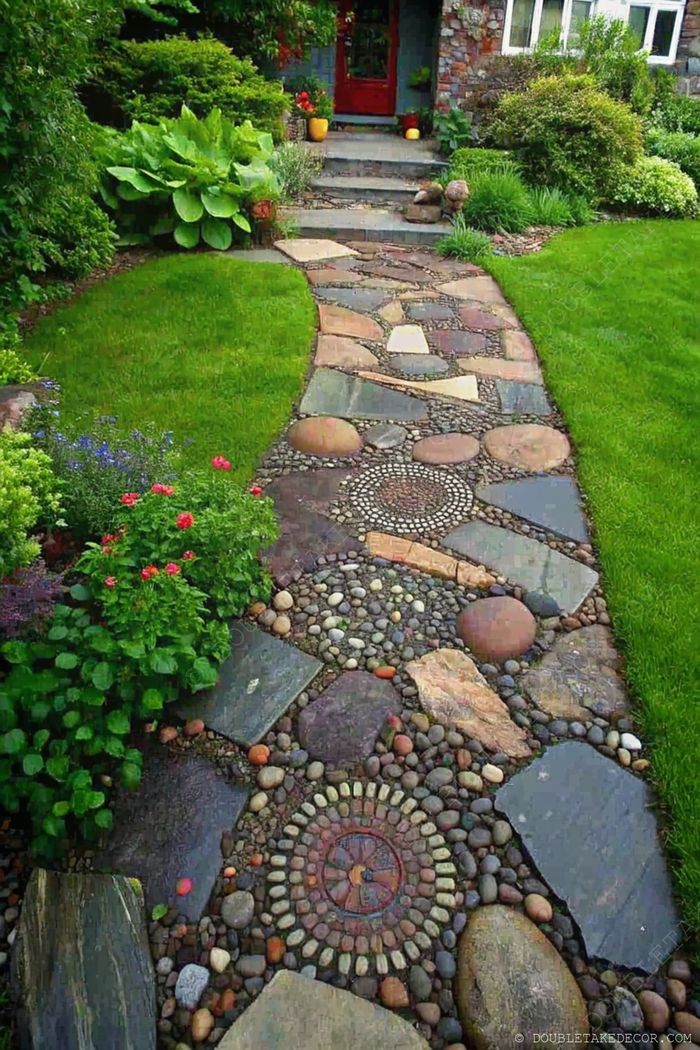
Design a captivating garden path by combining polished and rough stones with circular pebble patterns. Arrange stepping stones at comfortable walking distances and border with low-growing plants for a defined edge. For visual interest, incorporate contrasting materials and complement with colorful flowers to enhance your garden’s appeal.
Modern Black Stepping Stone Pathway
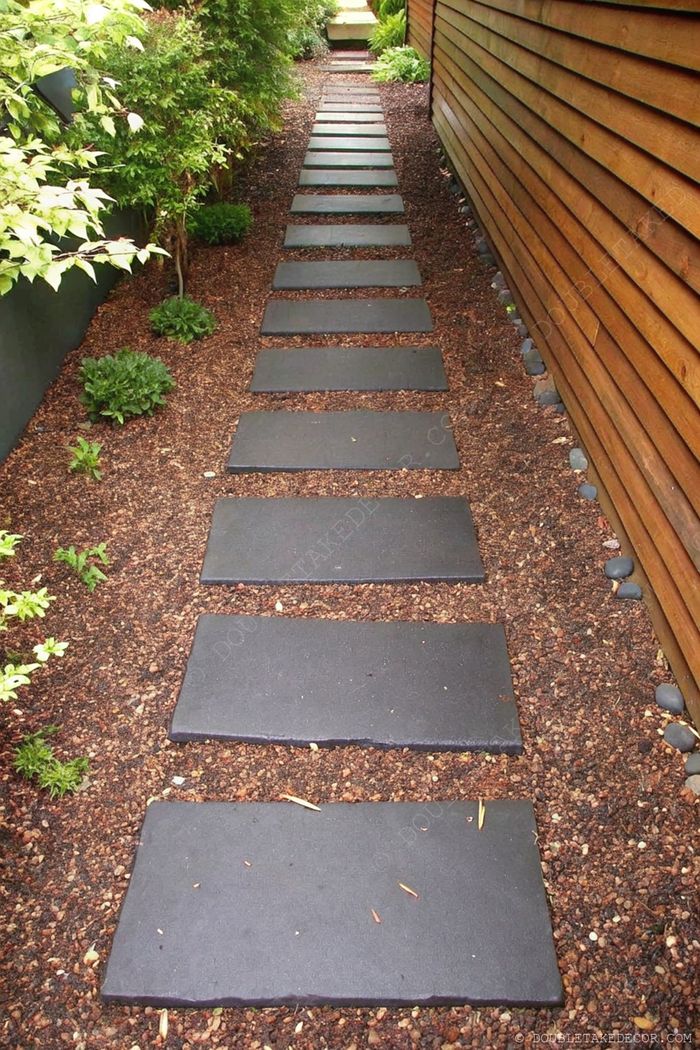
Create a sleek garden walkway with rectangular black stones placed in a linear arrangement. Use contrasting mulch between pavers for a polished look. Incorporate plants on both sides to frame the path, and add decorative pebbles along one edge for textural variety. This design works perfectly for contemporary landscapes while maintaining natural appeal.
Natural Stone Garden Pathway
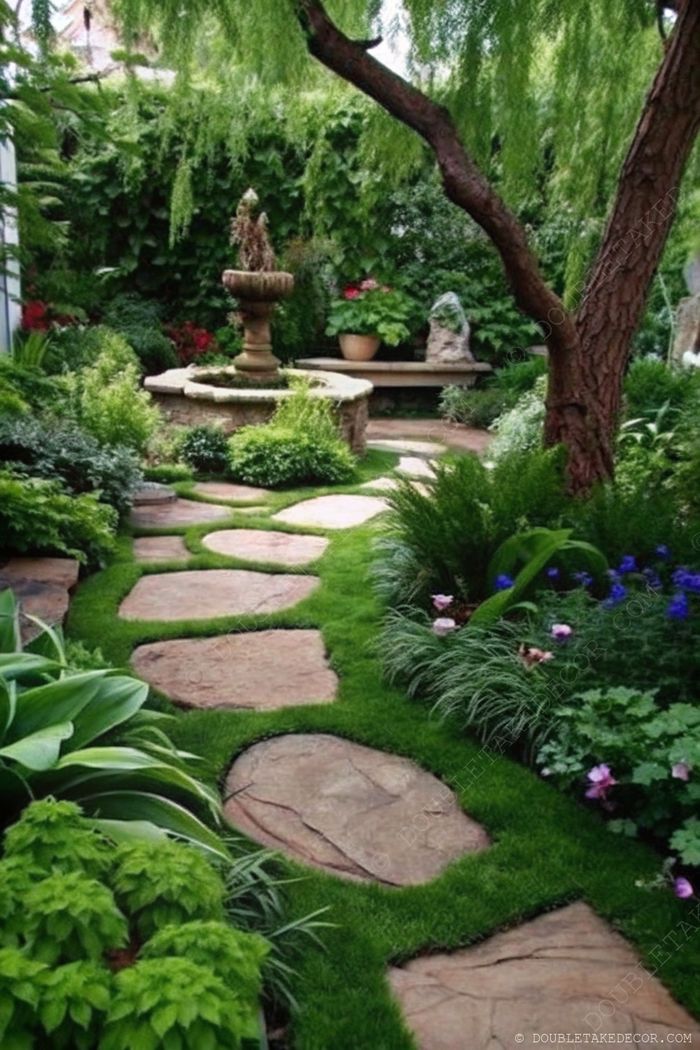
Create an elegant garden path using large natural stone slabs spaced evenly on grass. Enhance the walkway by planting colorful flowers and ornamental foliage along both sides. Consider adding focal elements like a fountain or bench to create restful destination points. This design combines functionality with aesthetic appeal.
Colorful Pebble Pathway Design
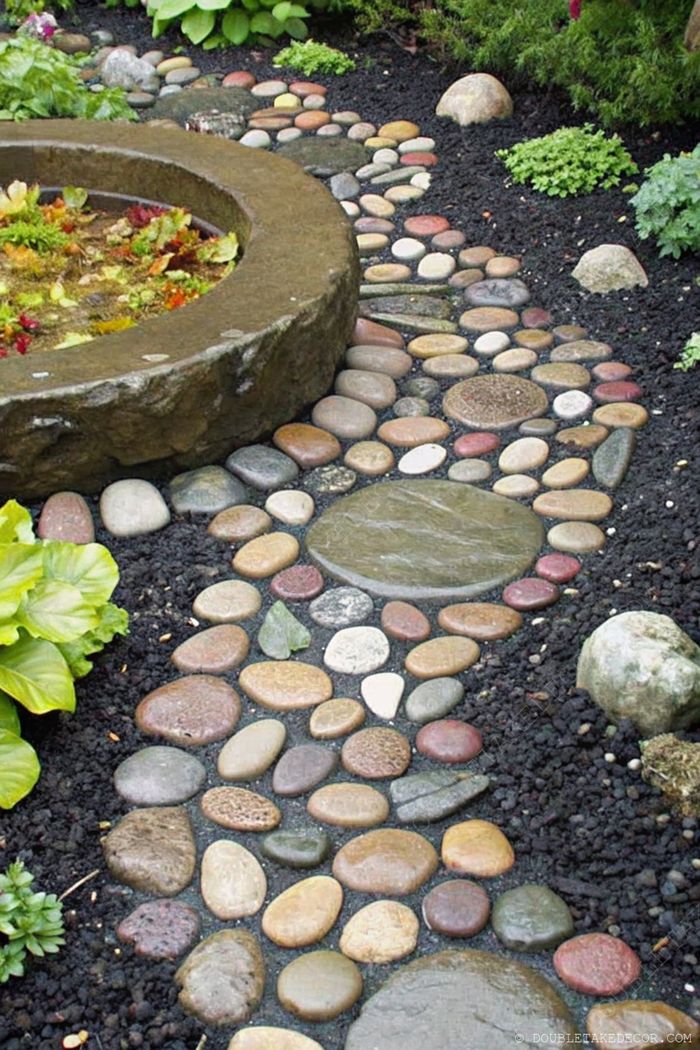
Create this eye-catching garden pathway using smooth pebbles in earthy tones. Arrange stones in an organic pattern leading to a decorative water feature. Complement with lush greenery along the edges for added texture. This design combines functionality with natural beauty while effectively guiding visitors through your garden space.
Mosaic Stone Tile Garden Path
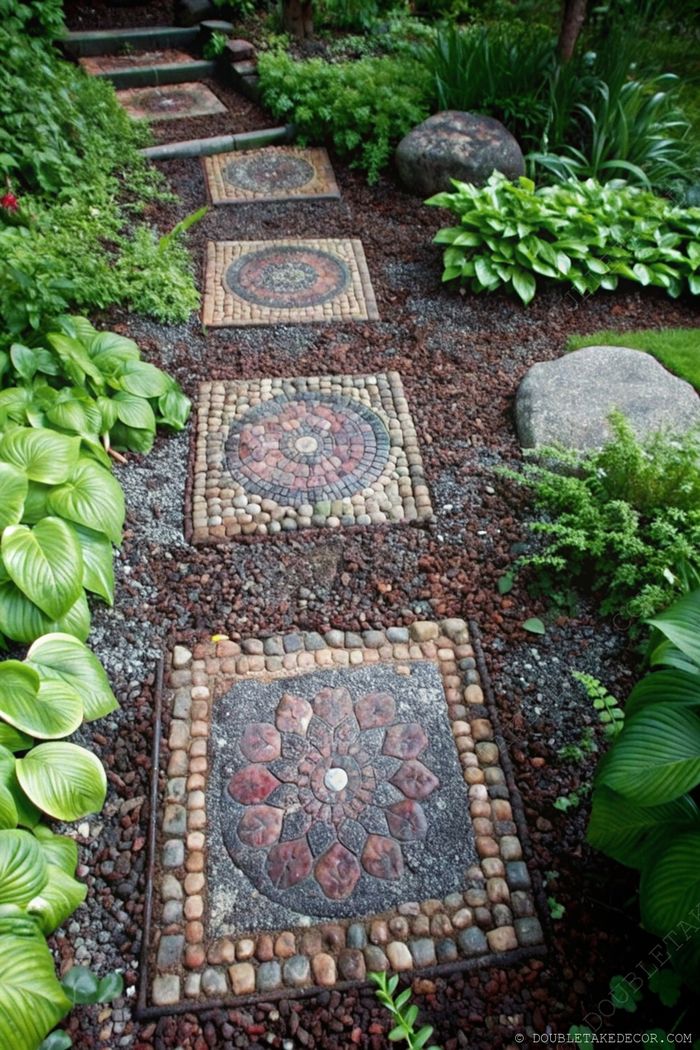
Create a captivating garden walkway with patterned mosaic stone tiles that serve both as stepping stones and artistic accents. Border your path with shade-loving hostas and ferns to highlight the textured designs. Position larger stones strategically alongside the path to enhance the natural landscape integration. Perfect for sloped areas that need both function and visual interest.
Wooden Rectangular Stepping Stones
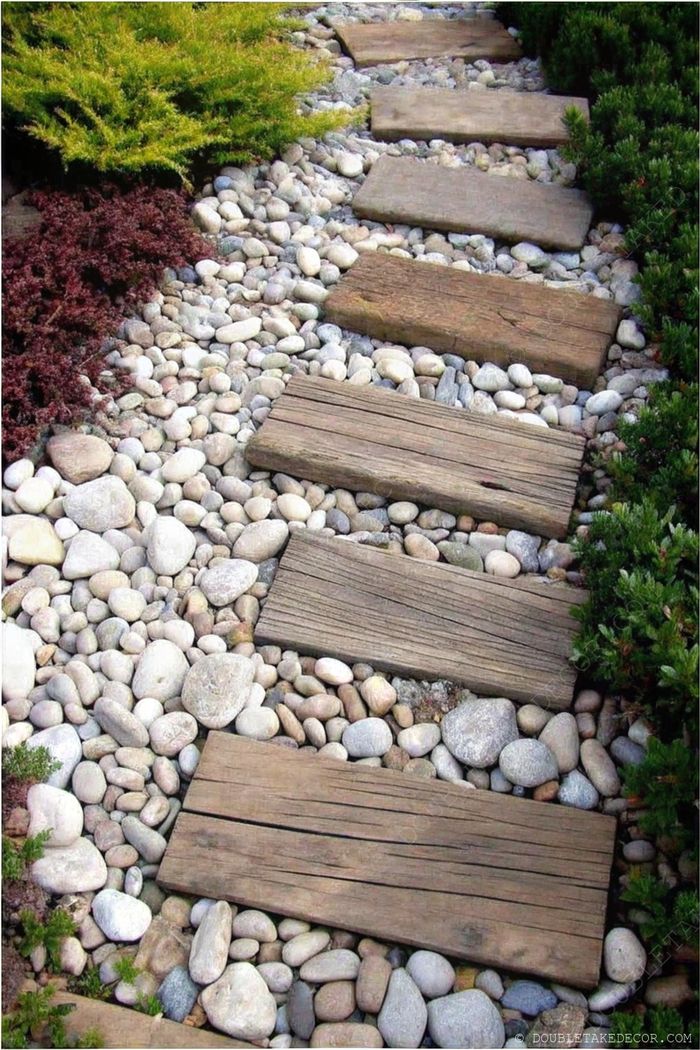
Create this elegant path using rectangular wooden slabs set over smooth pebbles for a striking textural contrast. Space the stones at comfortable stepping distances and surround with low shrubs to frame your walkway. This design works perfectly in Japanese-inspired gardens or modern landscapes, offering both functionality and visual appeal.
Flower-Bordered Stone Garden Path
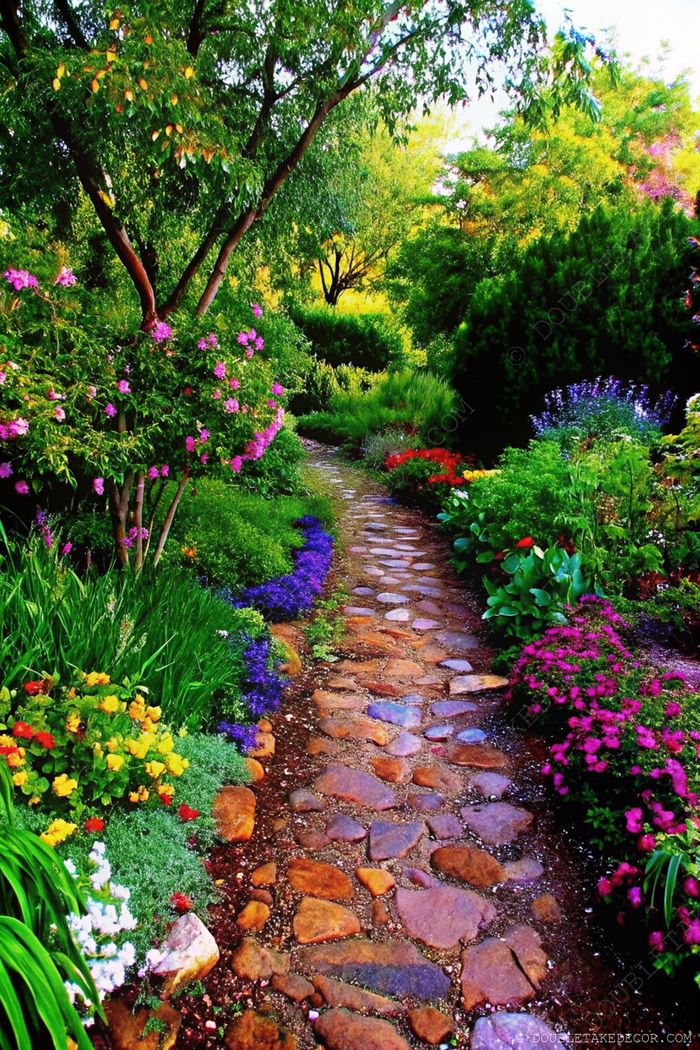
Create a picturesque garden walkway using irregular stone slabs surrounded by vibrant blooms. Arrange flowers in varying heights and colors for visual interest. Plant taller grasses behind shorter blooms to add depth. Position stones with enough space for ground cover plants to grow between them for a naturalized look.
Circular Pebble Pathway Design
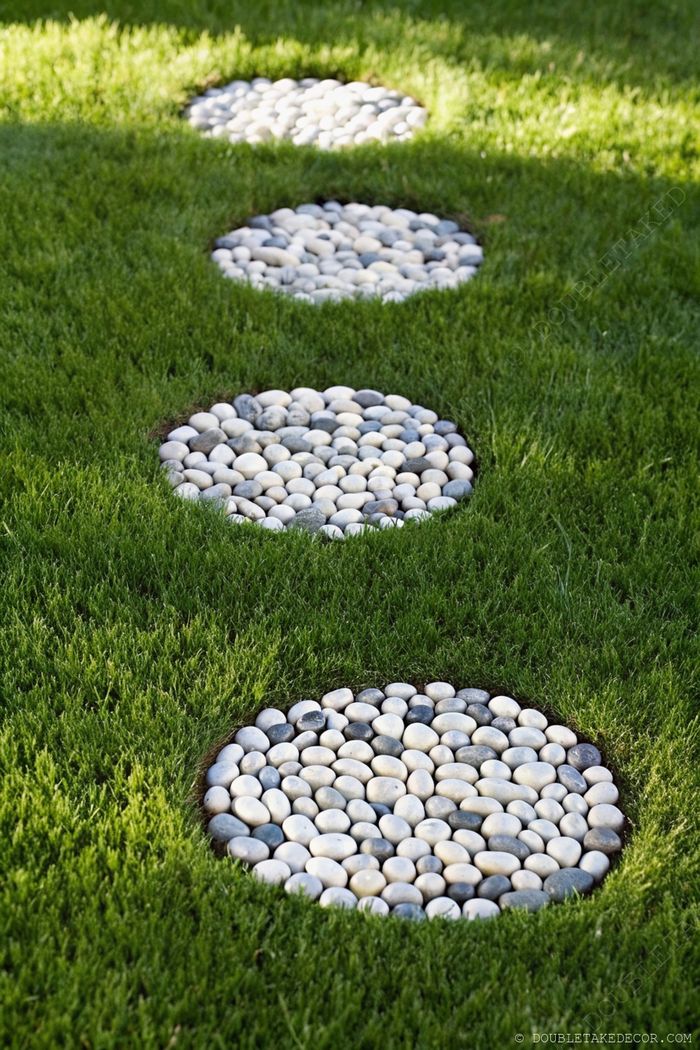
Create these elegant circular stepping stone pathways using smooth pebbles in contrasting colors. Arrange the stones within defined circular outlines for a polished look that enhances your lawn’s visual appeal. This design offers both functionality and artistic flair—perfect for guiding garden visitors while maintaining a sophisticated landscape aesthetic.
Natural Stone Pathway Through Greenery
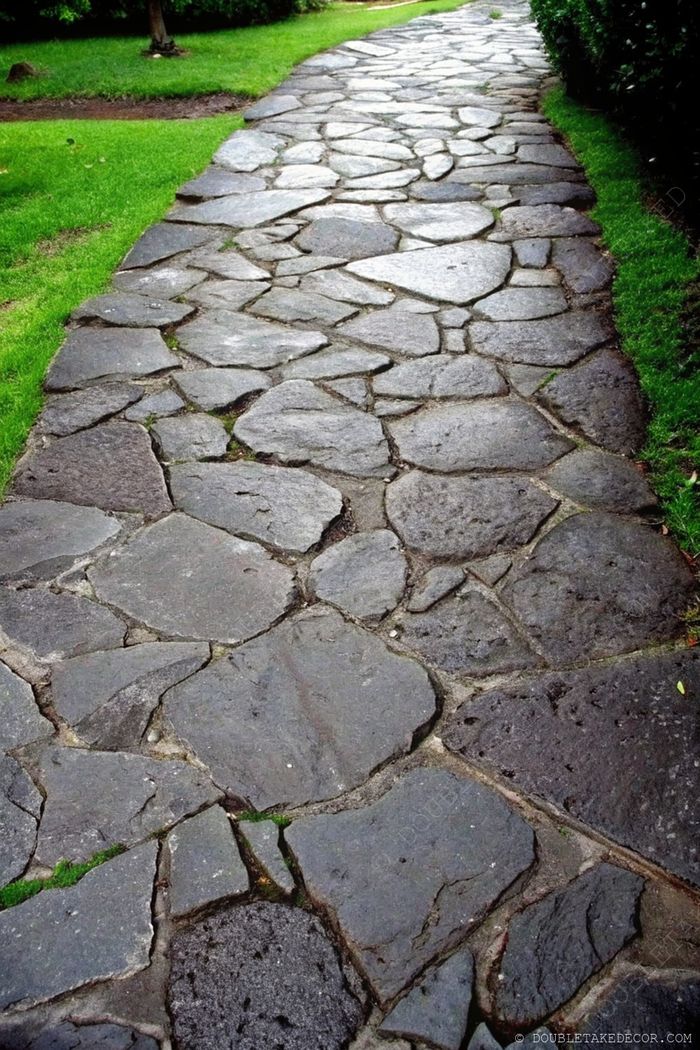
Create this meandering pathway using irregular dark stones fitted tightly together. The textured surface adds visual interest while the snug arrangement ensures stability. Border with lush grass to soften edges and enhance the natural aesthetic. This design offers both functionality and beauty, guiding visitors through your garden while complementing the surrounding landscape.
Natural Stone Garden Pathway
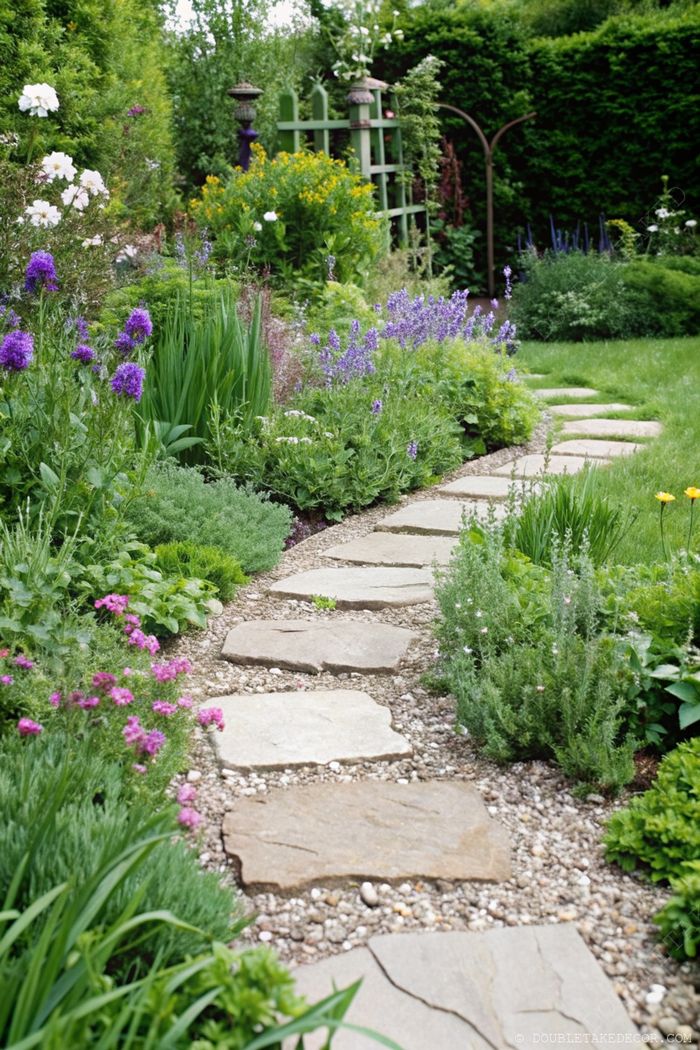
Create a flowing garden pathway using large stone slabs set within vibrant flower borders. Position the stepping stones with enough space for comfortable walking, while ensuring they’re level and stable. Plant low-growing aromatics like thyme or chamomile between stones for a sensory experience when walking through your garden sanctuary.
Rustic Stone Path Through Lush Lawn
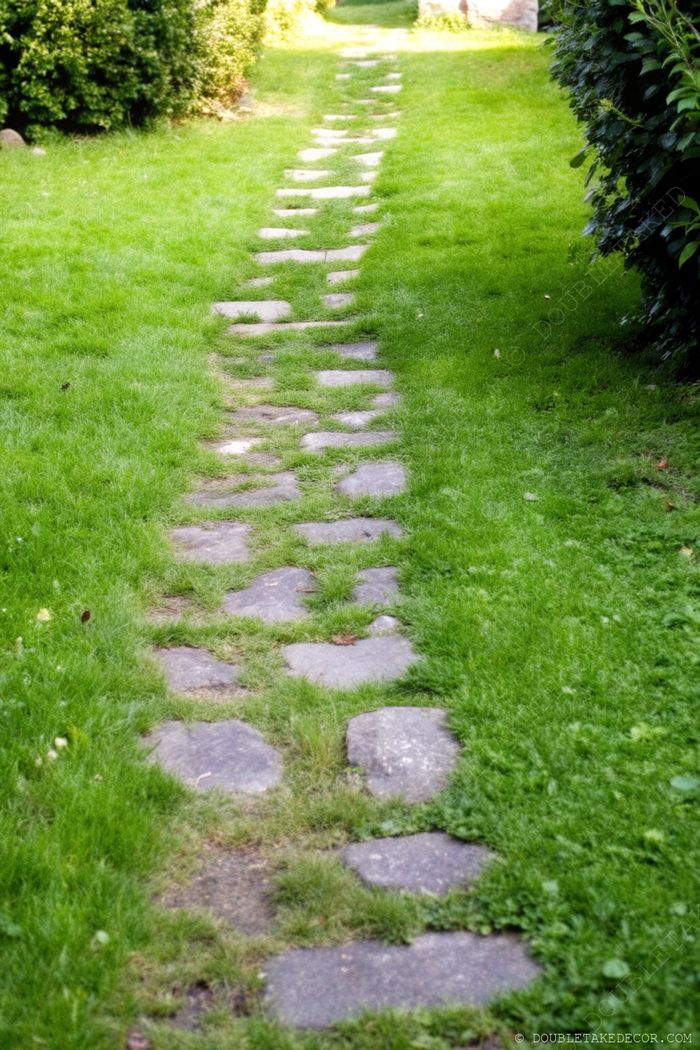
Create a natural-looking pathway by placing flat stones slightly apart to allow grass to grow between them. Ensure stones are level with the ground for easy mowing. This design combines practicality with aesthetic charm while maintaining the lawn’s integrity. Select stones of similar thickness for a stable walking surface.
Natural Stone Slab Pathway
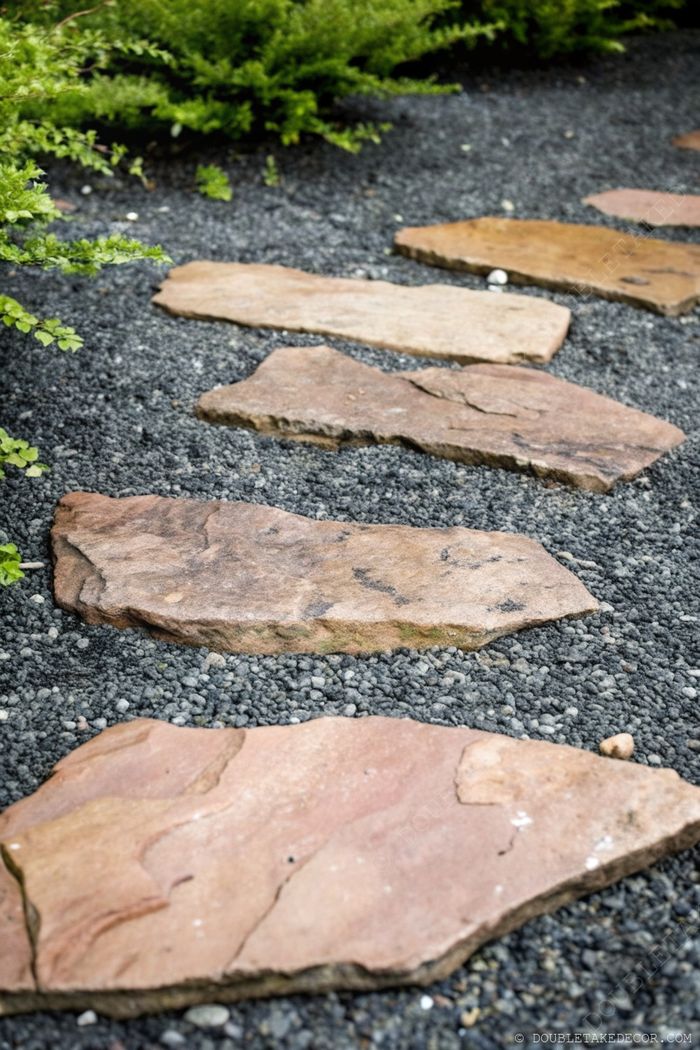
Install irregularly shaped stone slabs on dark gravel for a striking, organic pathway. Choose stones with consistent thickness for stable footing. Space them at comfortable walking distance—about 24 inches center to center. Edge with drought-tolerant plants for low maintenance. Rinse stones occasionally to maintain their natural color and texture.
Modern Rectangular Stone Pathway
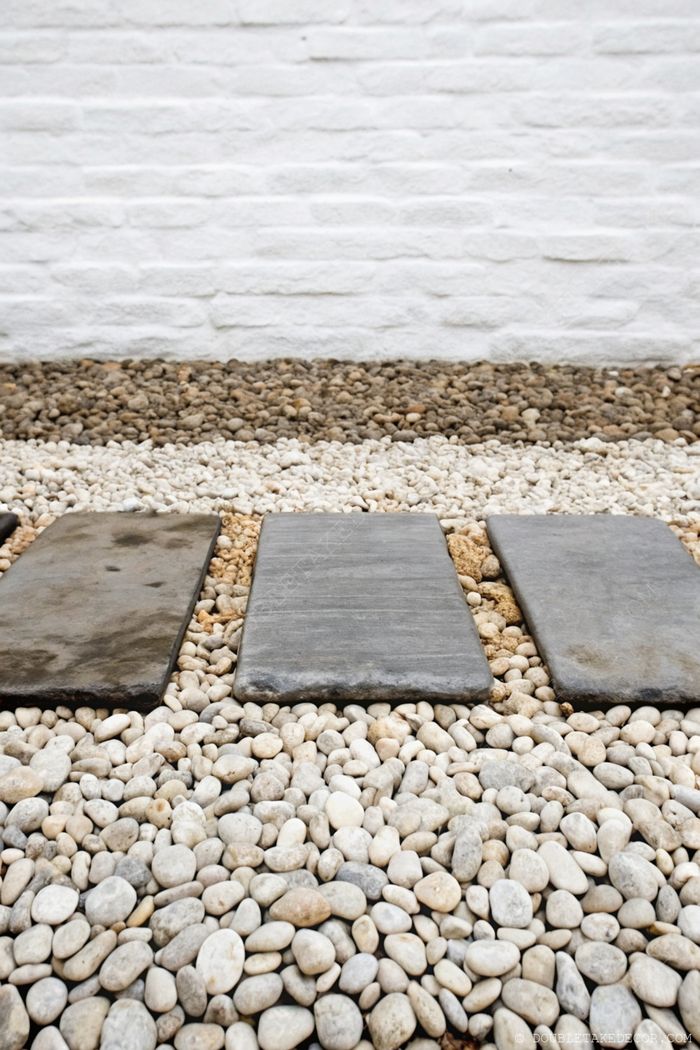
Create a sophisticated walkway by placing rectangular stone slabs over a mixed pebble bed. Alternate stone colors and textures for visual depth while maintaining consistent spacing. The pebble base enhances drainage and creates a striking contrast against the pavers. Perfect for contemporary gardens or minimalist outdoor spaces where functionality meets elegant design.
Stone Pathway with Delicate Flowers
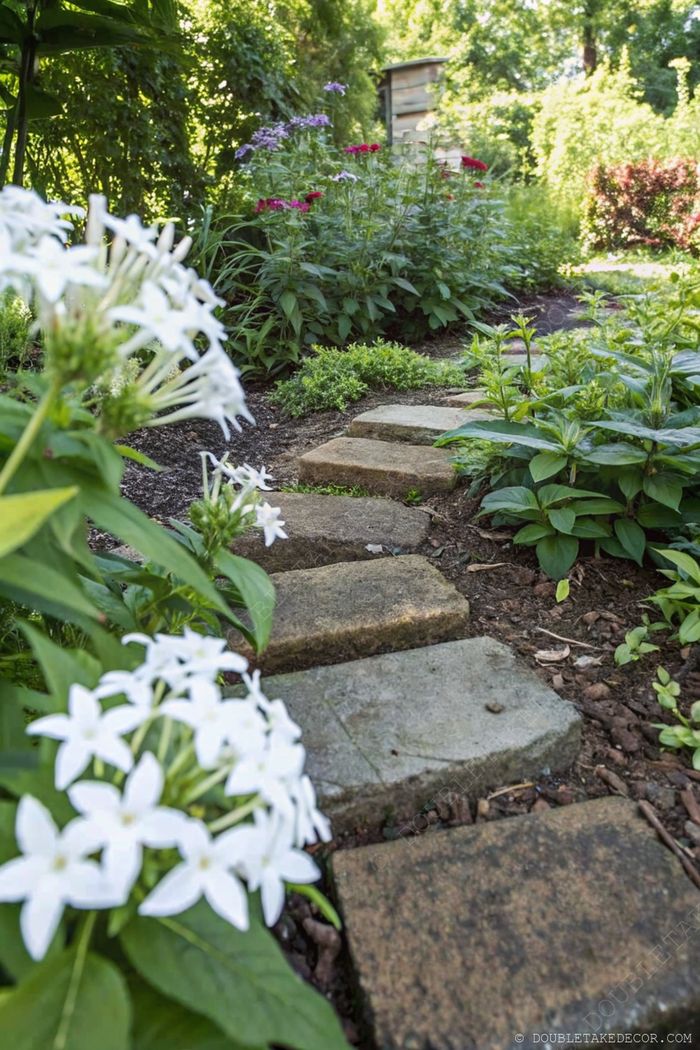
Create this tranquil garden path using natural stone slabs surrounded by star-shaped white flowers and varied foliage. Position stones with enough space between them for plants to thrive. Water regularly to maintain the lush appearance, and select shade-tolerant flowers for areas with dappled sunlight.
Circular Stone Garden Pathway
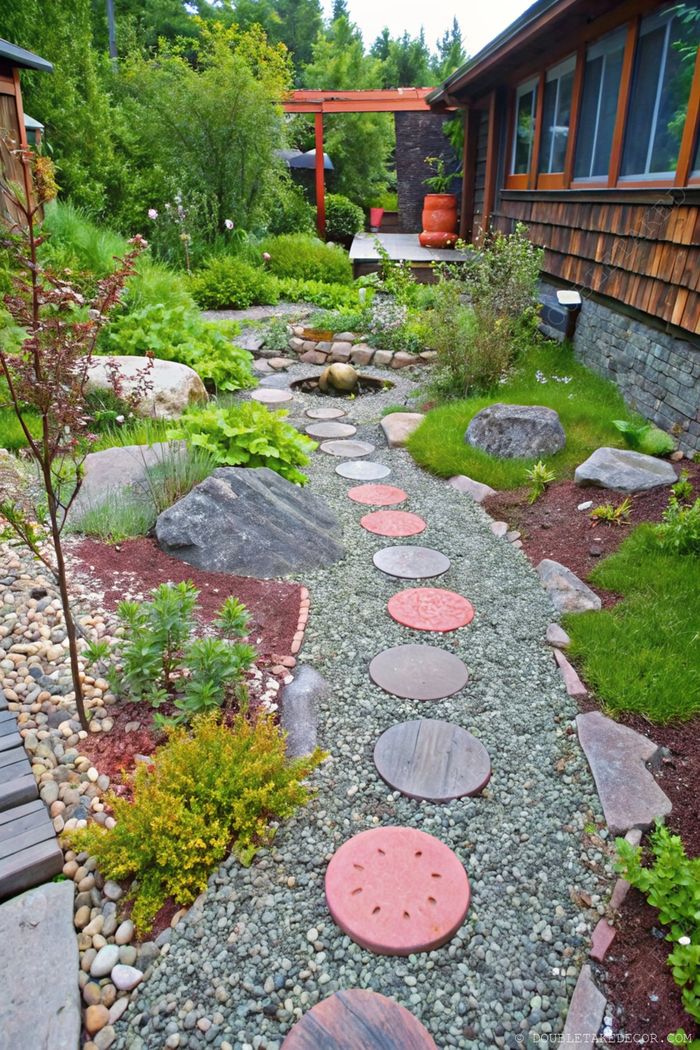
Create a visually striking pathway using alternating red and gray circular stepping stones set in gravel. Space them strategically to allow for comfortable walking pace. Enhance the borders with mixed textures of small pebbles and larger decorative rocks. Add low-growing plants alongside to soften edges while maintaining clear access.
White Cottage Entryway with Stone Pathway
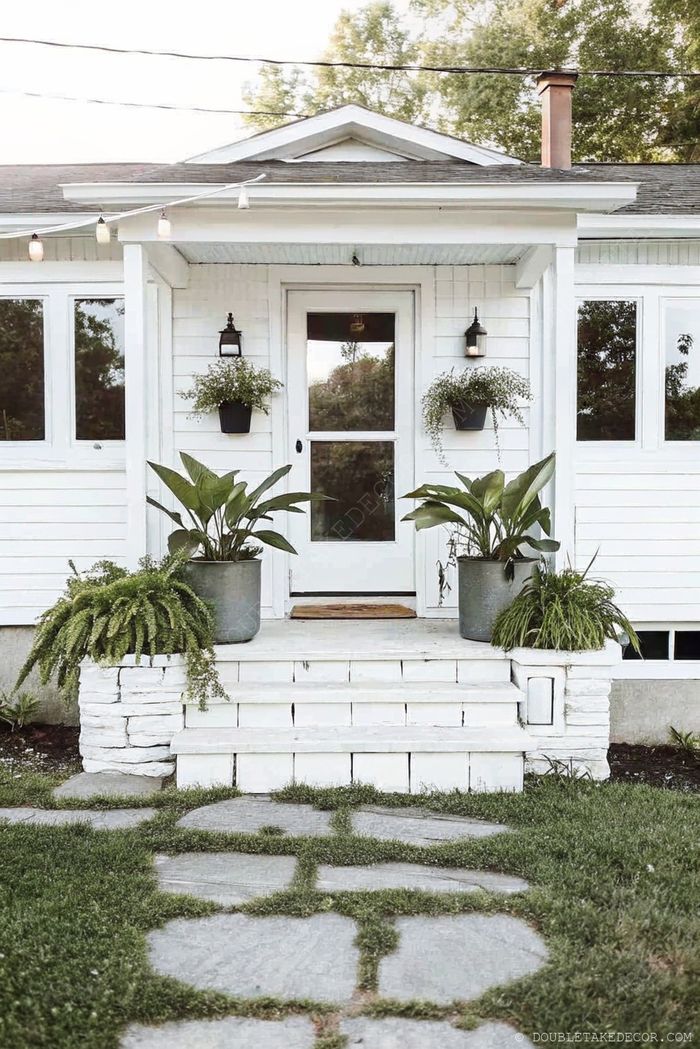
Enhance your entryway with large, spaced stone slabs interspersed with grass for a charming, natural look. Flank the path with complementary potted plants in neutral containers to create visual balance. Add hanging lanterns and overhead string lights to illuminate the space for evening enjoyment and enhanced curb appeal.
Garden Path with Interlocking Stones
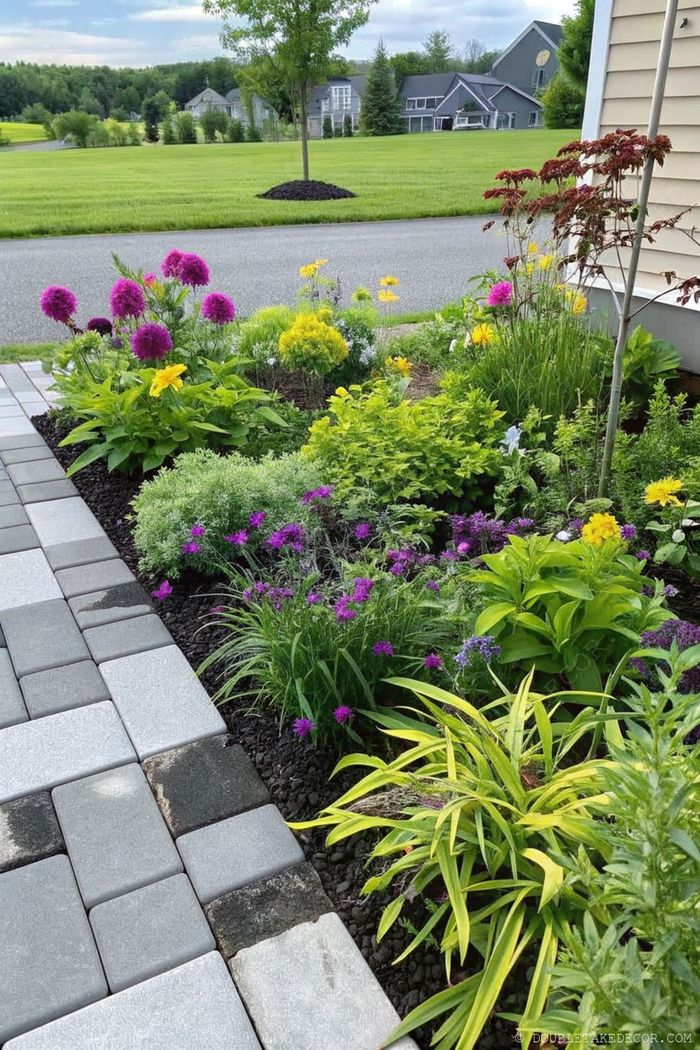
Create visual harmony by combining interlocking gray and white paving stones with vibrant plantings. Position bright purple and yellow blooms against dark mulch for maximum color contrast. This approach works perfectly for transitional spaces between patio areas and lawns, offering both functionality and aesthetic appeal to your outdoor living space.
Pool Area with Stone Pavers
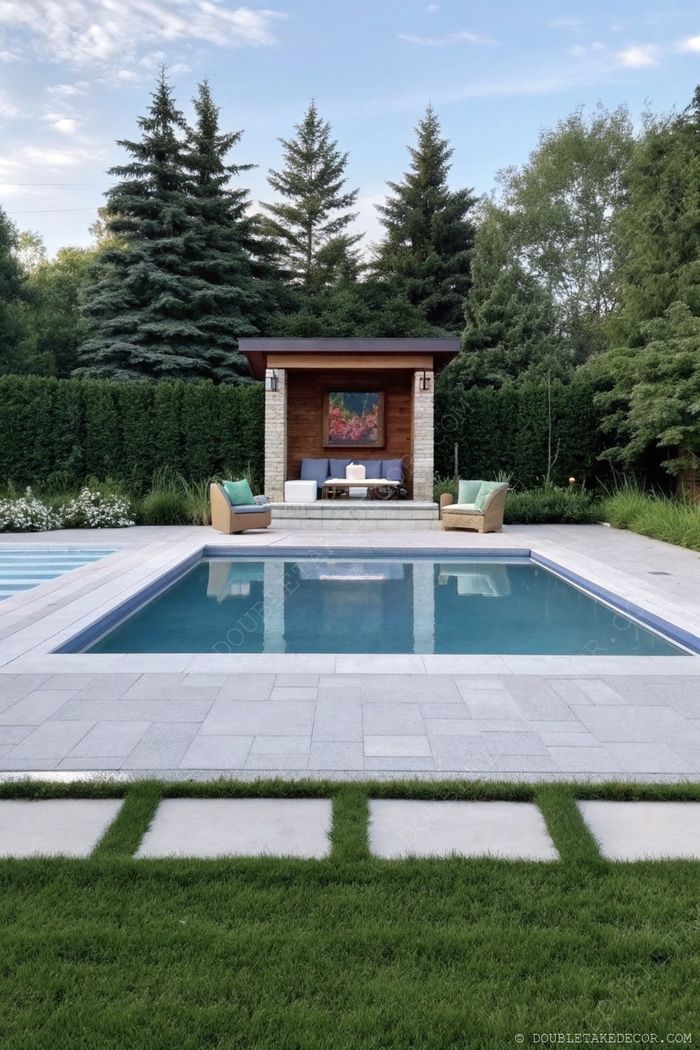
Create a tranquil poolside retreat by alternating large stone pavers with grass. This technique not only provides practical access around your pool but also softens the hardscape with greenery. Complete the space with comfortable seating and strategic plantings for privacy. Consider weather-resistant cushions in colors that complement your outdoor environment.
FAQ
What Are Stepping Stones?
Stepping stones, often seen in gardens or yards, are flat pieces that create charming walkways. Not only do they offer a stable surface for walking, but they also enhance the beauty of outdoor spaces. Typically made from materials like stone, concrete, or wood, these stones guide foot traffic while allowing grass or ground cover to grow between them. This design not only adds visual interest but also helps prevent soil erosion in certain areas. By marking paths and enhancing curb appeal, stepping stones serve both practical and decorative roles.
What Materials Are Used for Stepping Stones?
Stepping stones come in a variety of attractive and durable materials:
- natural stone, such as slate or flagstone, offers a rustic charm that stands the test of time,
- concrete is incredibly versatile and can be molded into various shapes to complement different designs,
- for those who prefer a classic aesthetic, brick stepping stones are ideal and can be arranged in interesting patterns,
- wood options, crafted from logs or planks, bring a natural feel to any space but require more maintenance due to weather exposure.
- each material presents unique advantages, allowing for customization to suit specific landscape designs and functional needs.
What Shapes and Colors Are Available for Stepping Stones?
Stepping stones offer a creative touch to landscape designs with their diverse shapes and colors. Popular choices include:
- circles,
- squares,
- rectangles,
- irregular forms.
These stones can be mixed to craft unique patterns suited to individual preferences. They come in a spectrum of colors, from earthy browns and grays to vibrant hues, allowing homeowners to align them with their garden’s theme or personal style. This versatility ensures that outdoor spaces are not only visually appealing but also functional.
How Are Custom Stepping Stones Made Using Molds?
Crafting your own stepping stones using molds is an easy and creative way to add a personal touch to your outdoor spaces.
- start by selecting a mold in your preferred shape and size,
- options abound, with both plastic and silicone molds available, providing a wide range of design possibilities,
- after choosing your mold, prepare the concrete mixture,
- for speedier results, opt for quick-set concrete,
- pour it into the mold, ensuring it’s spread evenly across the surface.
While the concrete is still wet, consider embellishing it with glass beads or colorful tiles to enhance its visual appeal. Allow ample time for the mixture to harden completely before removing it from the mold—this process typically takes several days to ensure lasting durability. Once set, these distinctive stepping stones will enrich your garden or yard with unique patterns and textures that reflect your personal style. This DIY project not only adds charm but also helps create practical pathways in outdoor areas.
What Is the Hardening Process for Stepping Stones?
The journey to hardening stepping stones kicks off by curing the concrete after it’s poured into molds. This crucial stage, typically lasting several days, strengthens and toughens the concrete. Factors like temperature and humidity can influence the duration of this process. For optimal results, it’s important to keep the stones moist and protected from extreme weather conditions. Once they are fully cured, these stepping stones are primed for outdoor use, offering both durability and functionality in landscaping projects while enhancing the beauty and utility of garden paths or patios.
How Should Stepping Stones Be Laid for Best Results?
For the best results when laying stepping stones, begin with a clear plan. Outline your desired path using string or chalk to ensure precision.
- dig shallow holes for each stone,
- make sure they are level with the surrounding ground to prevent tripping hazards,
- position the stones in these holes, maintaining even spacing for a natural walking experience.
Fill any gaps around the stones with soil or gravel. This secures them and helps them blend seamlessly into your landscape, enhancing both functionality and appearance. Opting for materials like concrete or natural stone from your local garden center can increase durability and complement existing outdoor features.
Regular maintenance will prolong your pathway’s life—frequently check that stones remain level and free from overgrown grass or weeds. This straightforward approach not only adds a lasting and appealing feature to any outdoor space but also guides foot traffic while enhancing your garden’s design.
How Can Stepping Stones Create Pathways?
Stepping stones create pathways, offering a stable surface for strolling through gardens or outdoor spaces. Arranged in various patterns, they guide visitors from one area to another while enhancing the landscape’s design. As grass or ground cover grows between them, these stones seamlessly integrate with the natural environment, giving a polished look. This not only enhances visual appeal but also helps prevent soil erosion.
How Can You Use Stepping Stones to Define Outdoor Spaces?
Stepping stones play a crucial role in defining outdoor spaces by clearly separating areas like flower beds, seating spots, and pathways. They not only organize the yard but also introduce texture and color, enhancing its visual appeal. Strategically positioned stones guide visitors through gardens while maintaining a cohesive design that highlights various landscape features. Moreover, they designate zones for activities like dining or relaxing, contributing to a well-structured and inviting outdoor environment.
Can Stepping Stones Be Used as Pavers?
Stepping stones are an excellent option for landscaping projects, offering a versatile alternative to conventional paving materials. Their flexibility allows for creative arrangements, and they can be easily replaced or moved, making them ideal for pathways, patios, or walkways.
- seamlessly blending with natural environments,
- enhancing the aesthetic of outdoor spaces,
- complementing various design styles,
- meeting practical needs,
- delivering both functionality and visual charm in gardens and yards.
What Are the Benefits of Using Stepping Stones in Gardens?
Incorporating stepping stones into your garden brings multiple benefits:
- create clear pathways that guide foot traffic,
- prevent soil compaction around flower beds, safeguarding fragile plants,
- introduce texture and color, enhancing the garden’s aesthetic appeal,
- help manage muddy patches by providing solid footing during rainy weather,
- serve as focal points that draw attention to special areas like seating spots or decorative elements, enriching the overall design of outdoor spaces.
As a result, they’re an excellent option for adding both beauty and functionality to any garden landscape.
How Do Stepping Stones Enhance Curb Appeal?
Stepping stones can truly elevate the charm of a home’s exterior, crafting inviting pathways that gracefully guide guests to the front door while enhancing the overall landscape design. Homeowners have the opportunity to express their style by selecting from various materials, shapes, and colors, resulting in distinctive looks that complement their property. Strategically placed stones lead visitors along unique routes, highlighting garden features along the way.
- these elements seamlessly blend with their surroundings,
- enhancing a yard’s beauty and potentially making it more appealing to buyers or visitors,
- beyond aesthetics, stepping stones serve a functional purpose.
They help prevent soil erosion and improve accessibility throughout the area. As such, they offer versatility to any landscaping project.
Mejora el sendero de tu jardín con hermosas piedras de paso
Embellissez votre allée de jardin avec de magnifiques pas japonais
Verschönere deinen Gartenweg mit wunderschönen Trittsteinen.
Tedd szebbé a kerti ösvényedet gyönyörű lépcsőkövekkel
Skrás svoju záhradnú cestičku krásnymi nášľapnými kameňmi
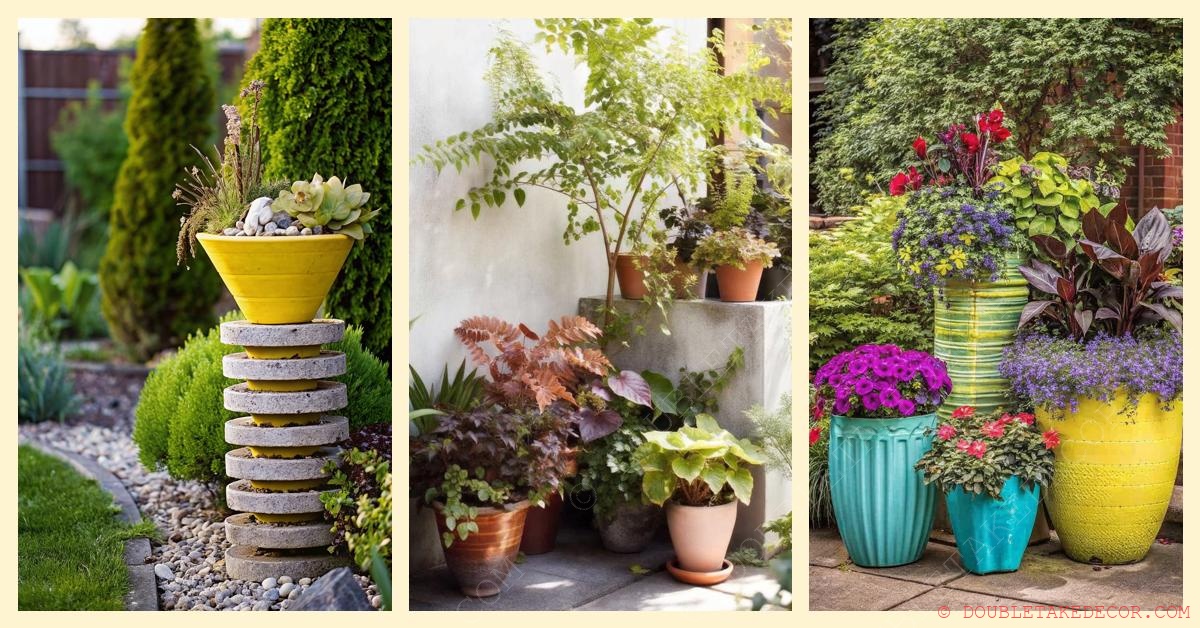
Creative Potted Plant Arrangement Ideas to Brighten Your Space
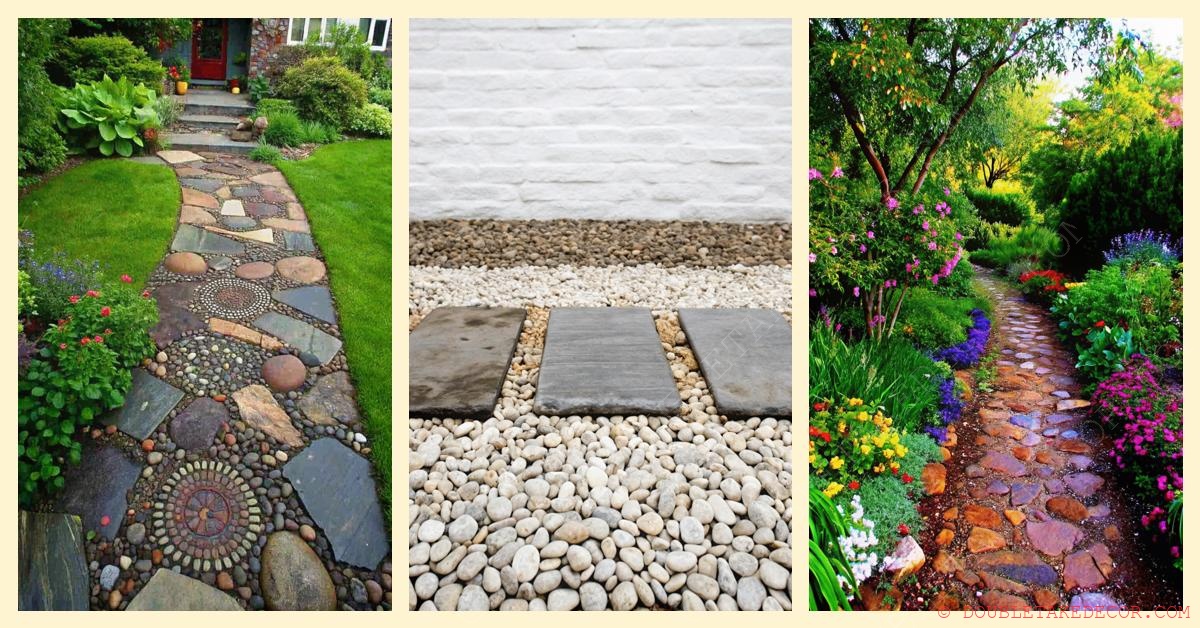
Enhance Your Garden Path with Beautiful Stepping Stones
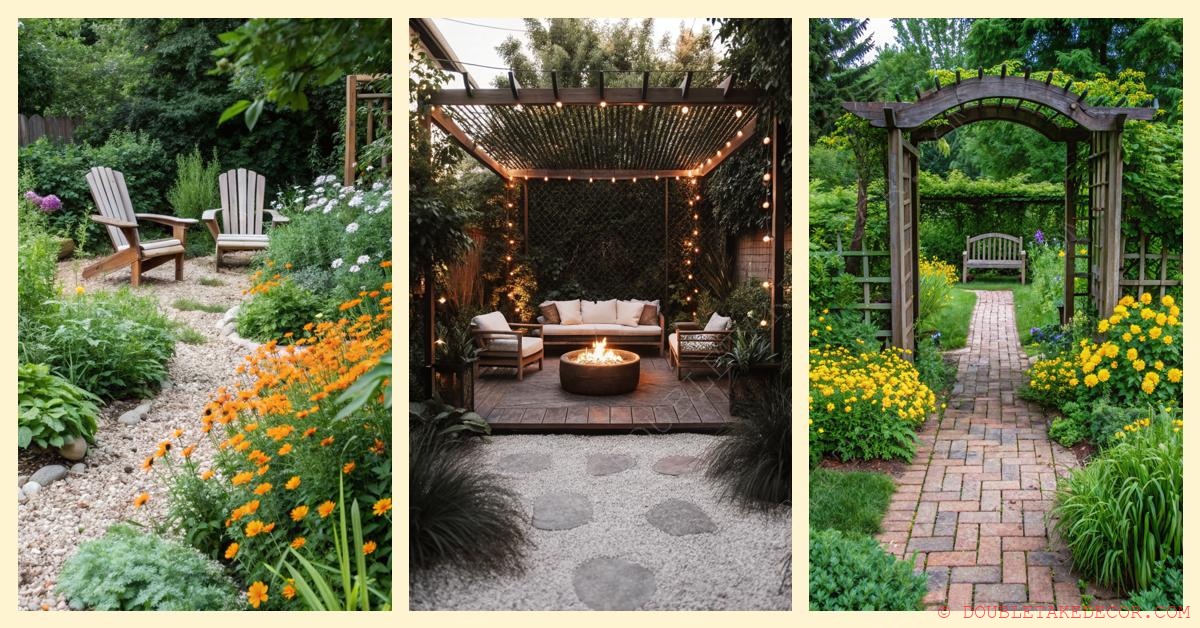
Transform Your Backyard with a Cozy Garden Nook
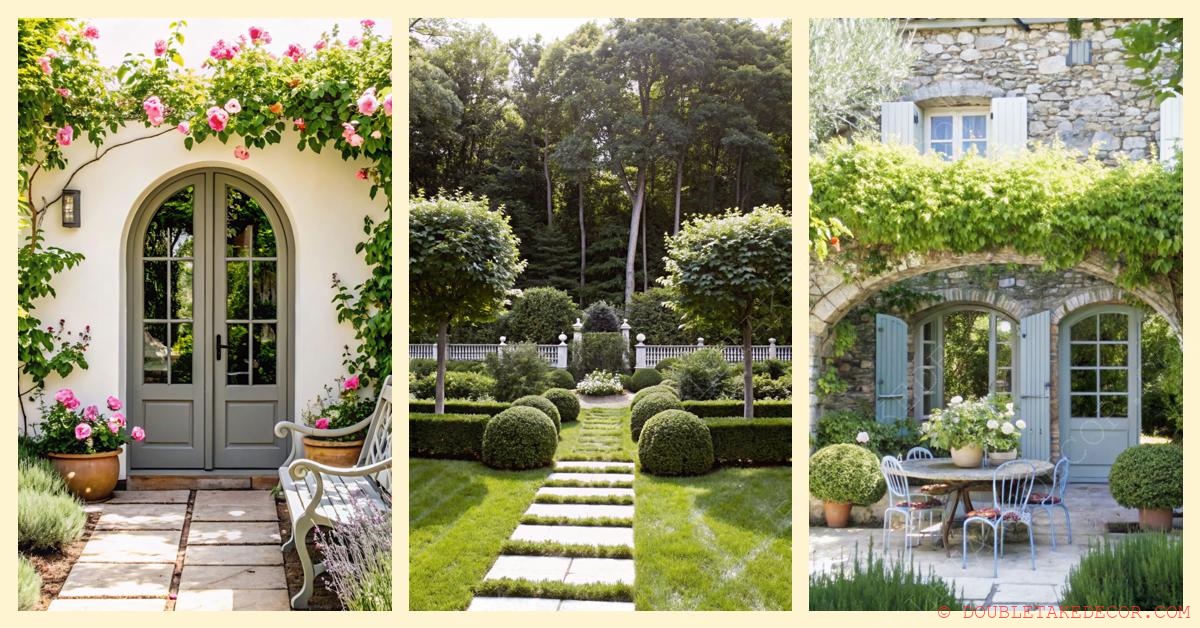
Creating Your Own French Garden: Design and Inspiration
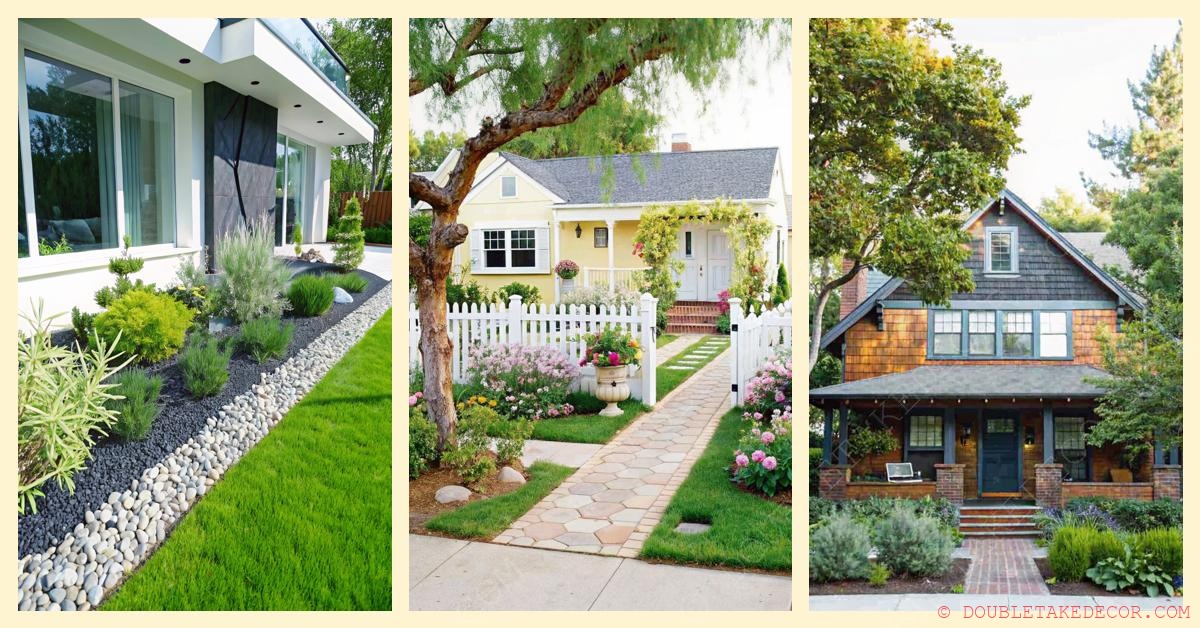
Transform Your Curb Appeal: Inspiring Front of Home Landscaping Ideas
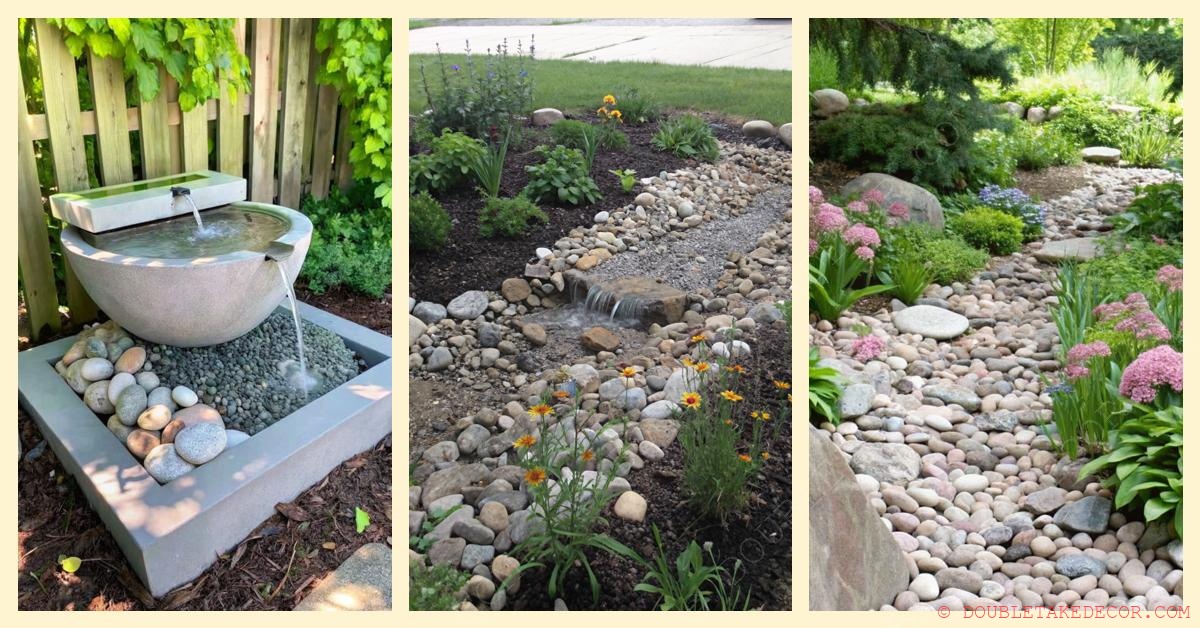
Innovative Rainscaping Ideas for a Sustainable Garden
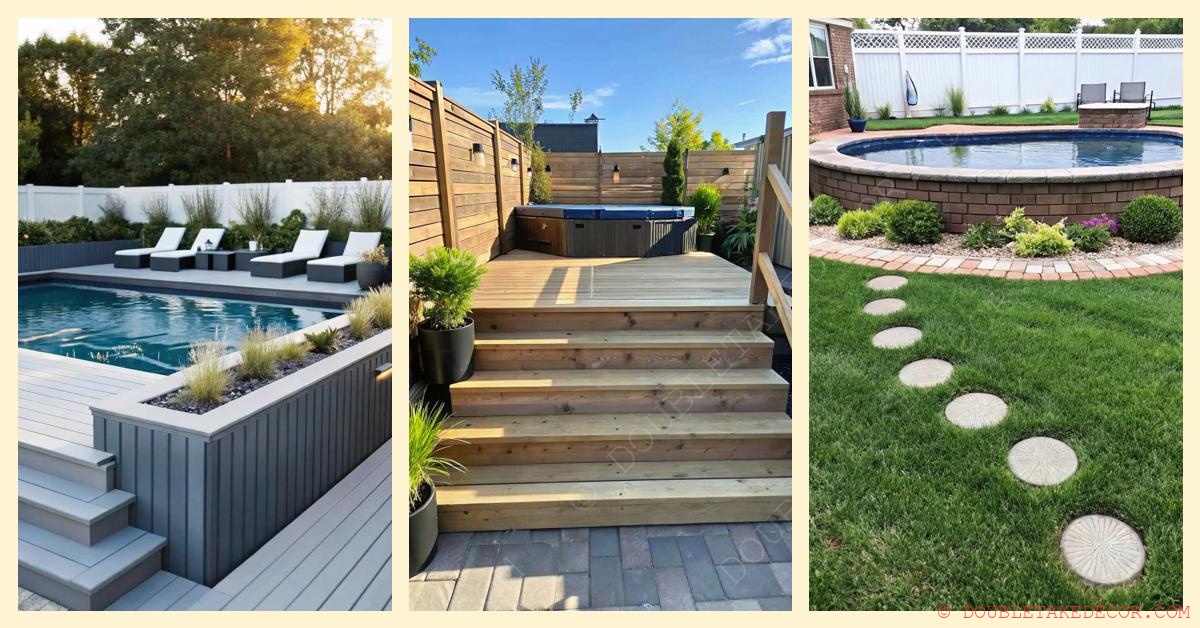
Stunning Above Ground Pool Ideas to Transform Your Backyard
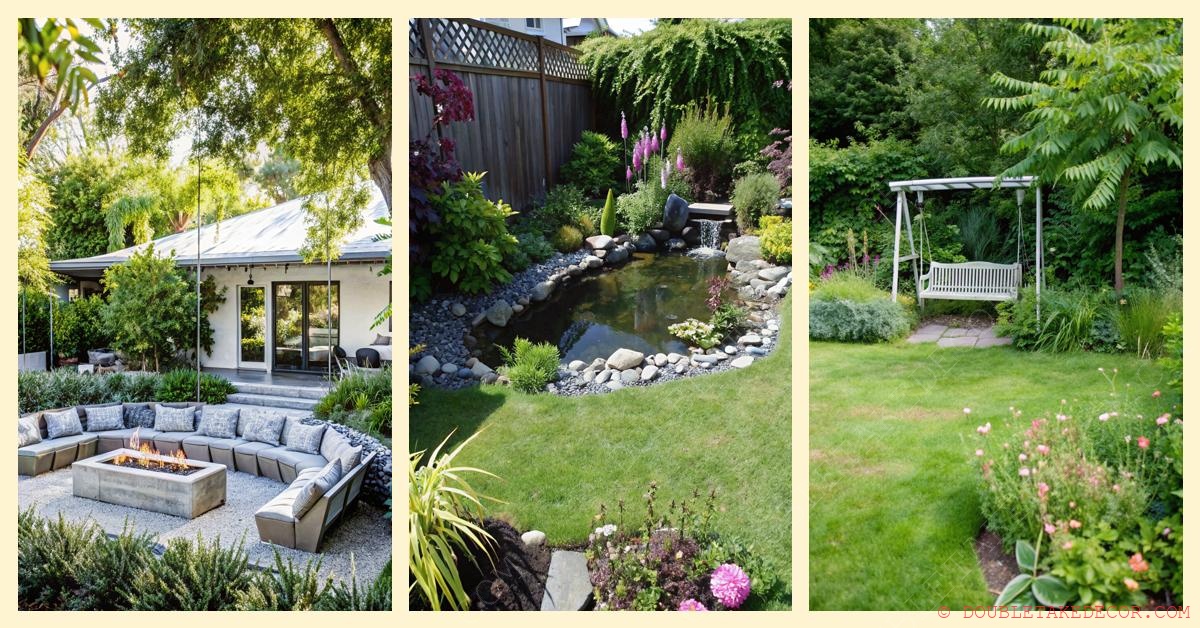
Ultimate Guide to Crafting Your Perfect Backyard Layout
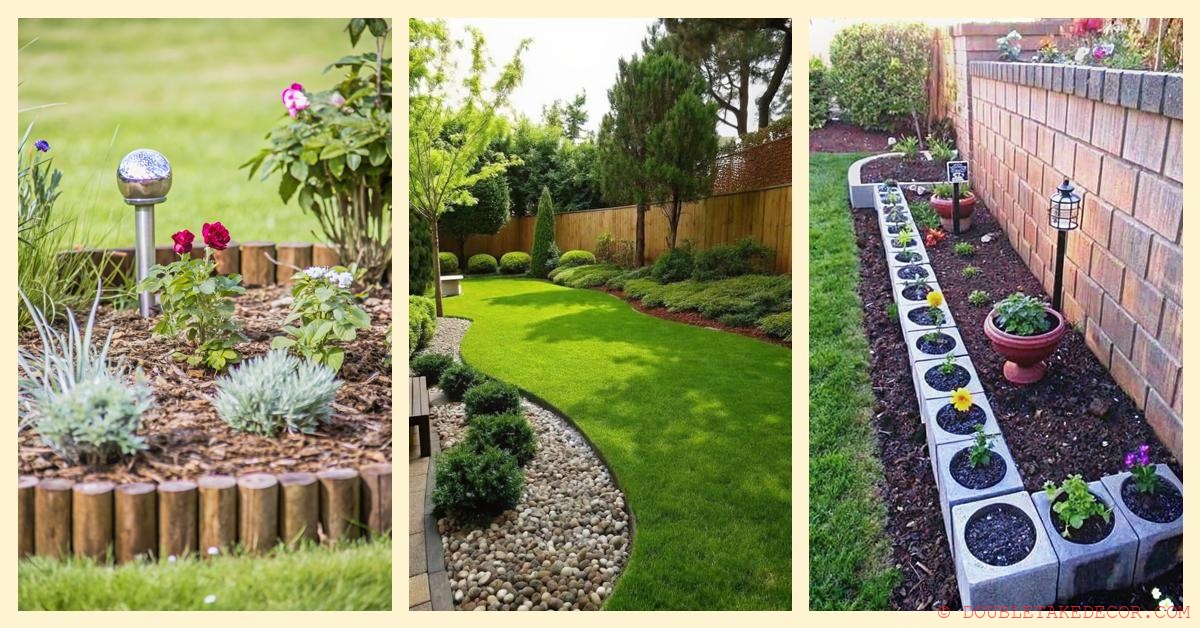
Transform Your Garden with Beautiful Edging Ideas
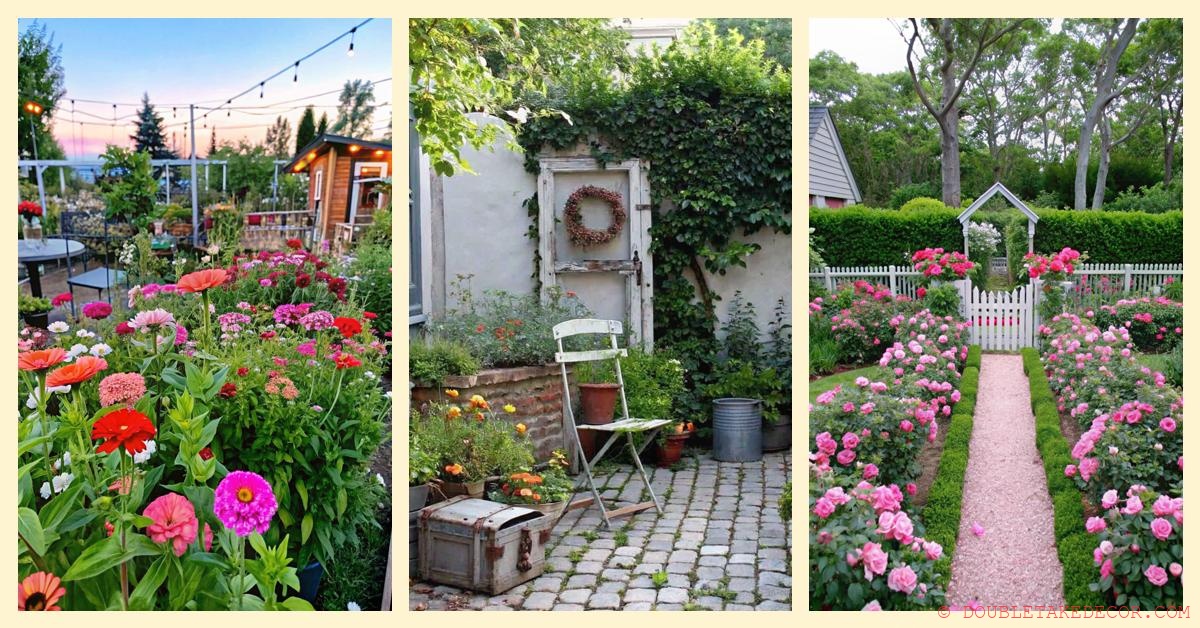
Transform Your Outdoor Space with Shabby Chic Garden Ideas
